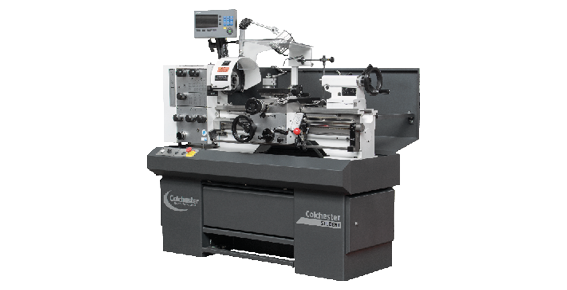Our conventional lathes excel in producing highly precise components, making them ideal for applications where tight tolerances are crucial. These machines can accommodate a wide range of materials, from metals to plastics, allowing for diverse manufacturing capabilities. Built to withstand rugged, heavy-duty use, our lathes give years of outstanding service with the absolute minimum of maintenance. At the same time, all Colchester & Harrison manual lathes are capable of very fine precision turning.
With swings from 330mm to over 800mm, we have one of the most extensive turning machine lines in the industry. From education learning, tool rooms and small part runs to extra-large component manufacturing, we have the precision lathe you need to produce your components accurately and efficiently. With our history going back to the 1880’s, global manufacturers have relied upon Colchester & Harrison for their precision machinery needs.
Precision metal cutting lathes from Colchester & Harrison are essential for anyone needing to hold tight tolerances and increase productivity. From turning, grooving, and threading, our geared-head and variable-speed lathes can handle all your machining needs with ease. Our entire range gives you exceptional ease of use and a huge choice of optional and ancillary equipment guarantees top of the range performance even for the most complex and challenging jobs.
Colchester and Harrison conventional lathes stand as enduring symbols of craftsmanship and precision in the manufacturing world. These machines continue to hold a vital place in engineering and manufacturing industries due to their cost-effectiveness, simplicity, and the irreplaceable touch of skilled operators.
Check out our full range below or call us on +44 (0) 1924 415 000 or email sales@colchester.co.uk for more information.
Lathe Terminology Explained - Understanding key specifications is essential when selecting the right lathe for your application. Below are definitions of common turning machine terms to help you make an informed decision:
Distance Between Centres - The distance between centres refers to the maximum length of workpiece that can be mounted between the headstock and tailstock of the lathe. This specification determines the maximum turning length the lathe can accommodate.
Why it matters - A greater distance between centres allows for the machining of longer components, making it a critical measurement for industries producing shafts, rollers, or other elongated parts.

Swing Over Cross-Slide - Swing over cross-slide is the maximum diameter of workpiece that can rotate above the cross-slide without obstruction. It is typically less than the swing over bed due to the height of the cross-slide assembly.
Why it matters -This measurement is crucial when working with parts that require tool clearance or when facing operations are performed close to the cross-slide area.

Swing Over Bed - Swing over bed refers to the largest diameter of workpiece that can rotate freely above the lathe bed. It is one of the most commonly referenced specifications when comparing lathe capacities.
Why it matters - It determines the maximum size of workpiece that can be turned without interference from the bed, making it a key factor in selecting a lathe suitable for your component sizes.

Swing in Gap - Swing in gap is the maximum diameter of workpiece that can be turned within the removable gap section of the lathe bed, located near the headstock. This allows for turning larger diameters than would be possible over the standard bed.
Why it matters - This feature provides additional versatility, particularly for short, large-diameter components such as flywheels or pulleys.

Need help?
Call our Sales team on 01924 415000














